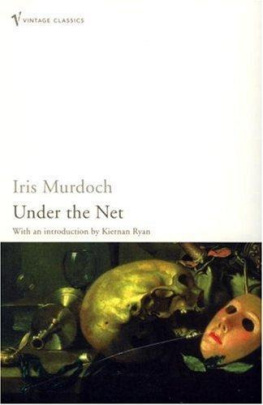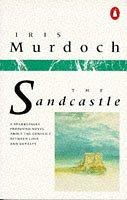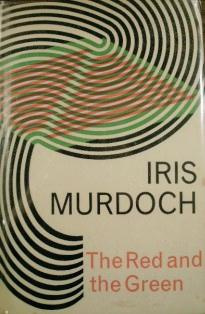Francesco Puerari
The Basics of Iridology
3
Markings

Summary
.........................................
Acknowledgements
I want to thank the masters of Iridology E. Ratti, F. Minisini, J. Karl, W. Hauser, R. Stolz, A. A. Sartorelli, L. Birello and the Italian Iridology Association (ASSIRI).
About the author
Francesco Puerari MD has worked in an Italian General Hospitals Anaesthesia and Intensive Care Unit for 34 years. He has earned at the University of Pavia several postgraduate specializations (Anaesthesia and Intensive Care, Dietetics and Nutrition, Medical Toxicology, Neurology). All along his professional life, he has also attended complementary medicine resources (Iridology and Homeopathy).
Work plan
This is the third of three books on Iridology. Is a reasoned atlas of iris images. Current medical practice can profit from the analysis of the iris. Together with a correct patient examination according to the standards of official medicine, iris analysis adds data that can help achieve a more complete clinical evaluation. The first part of the book provides a classification and description of morphological patterns (markings) occurring in iris, pupil and sclera. In the second part, markings are associated to an iris chart where each organ is related to a sector of the iris. Finally, the book provides examples from clinical practice based on the notions presented in this manual and in the previous two books (Iris Patterns and Maps). The examples have been chosen with the aim of suggesting a method for iris analysis both rigorous and flexible, in accordance with the principles of medical practice.
Copyright
Copyright 2013 by Francesco Puerari All rights reserved. No part of this book may be reproduced or transmitted in any form or by any means, graphic, electronic, or mechanical, including photocopying, recording, taping or by any information storage or retrieval system without the written permission of the author/publisher.
Published by: Francesco Puerari
(www.irispatterns.it ).
ISBN: 978-88-940272-2-8

Iridology a definition
Iridology studies the coloured part of the eye named iris. The iris is a highly innervated organ which is stimulated by the external environment as well as by the body. The structure of the iris mirrors the individual constitution; illnesses, harmful habits and aging can alter it. The iris analysis completes medical practice by supplying data on constitution, nervous response, damages caused by aging, illnesses and familiarity. Iridology is a discipline that enriches official investigations. It collects signs. It does not provide diagnosis. This book is an information source only. It does not provide advice for self prescriptions and treatment.
Mapping
A subdivision of the iris into rings and sectors will be used to locate iris signs. Circular subdivision and sectorial subdivision: the iris subdivision in concentric circles (circular map) or in radial sectors (sectorial map), simplifies iris analysis and allows for a correct localization of the points of interest.
Circular map. The circular subdivision divides the iris into six concentric circles which coincide with as many areas and functions of the human body.
Sectorial map. The eight sectors of the sectorial subdivision coincide with the major apparatuses. The subdivision of the iris into sectors and concentric circles is the method applied in this text book.
Basic Terminology
Basic iridological terms referring to the most important iris areas: inner pupillary border, collarette, nerve edge, ciliary body, sclera. Inner Pupillary Border. The pupils border is constituted by the final offshoots of the posterior ocular chambers coating. It is a dark-colored granular tissue called inner pupillary border. Collarette. First portion of the iris around the pupil. It is a circular band delimited by an uneven edge. It corresponds to about a third of the iris area. Nerve edge. Autonomic nerve edge. Uneven edge circumscribing the collarette. It is also called autonomic-cord or neurovegetative ring. Ciliary body. The area surrounding the collarette that corresponds to the remaining two thirds of the iris is called ciliary body. Sclera. Also known as white of the eyes, it is the connective tissue coat of the ocular globe.
Main Morphologies
IRIS COLOR. The main characteristic of the iris is its color. Therefore, the first classification used in iridology is color-based. Irises are divided into three groups called constitutions: dark irises (hematogenic constitution), clear irises (lymphatic constitution), mixed irises (biliary constitution).
IRIS TEXTURE. Iris color is spread over a texture constituted by radial fibers. Irises can have a different appearance according to fiber dimensions, fiber thinning and fiber direction or waving. According to the appearance of fiber texture irises are classified into five main categories (types): connectival (large thinned-out areas of fiber texture with the shape of lacunae), glandular (small lacunae distributed around the collarette), neurogenic (bright, thin, straight fibers radiating in a regular pattern), tubercular (bright and wavy irregular fibers), spasmodic (texture interrupted by circular or radial furrows).
PIGMENTATION. Irises can be impregnated by pigments, spots and patches which can appear during lifetime or be inherited at birth.
SCLERAL CAPILLARIES. Scleral capillaries are generally not visible. The presence of visible vessels with various features can be a useful source of information.
THE FIVE DIATHESES. Pigments impregnating the iris and the presence of inflammatory capillaries in the sclera, identify other five major iris categories called diatheses. Exudative (bright-colored aggregations similar to cotton flakes called tophi distributed around the outer rings or in the ciliary body). Uric (bright yellow or orange tophi distributed around the outer rings or in all ciliary body). Dyscratic (layers of pigments covering the iris, sometimes aggregating in raised patches). Lipemic (milkish translucent impregnations of the outer rings, sometimes calcified ones). Allergic (network of inflammatory capillaries in sclera' lateral sectors).


Main Markings
Markings of various kinds can be present in the iris at the same time. Before analysing them in detail, it is worth to provide a short description of the main iridological markings
Next page











 Iridology a definition
Iridology a definition 



